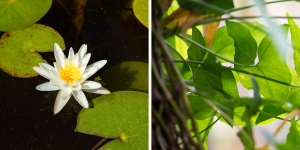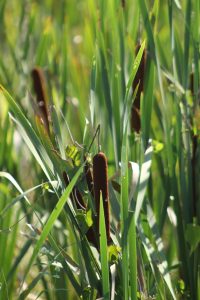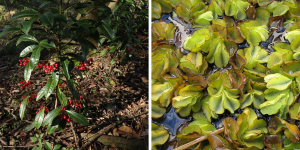This blog was written by Anelise Bullard, UF/IFAS CAIP communications intern.

When you hear the term “invasive plant”, what’s the first thing that comes to mind? You may think of water hyacinth (Eichhornia crassipes) and cogongrass (Imperata cylindrica), or maybe you simply think of something that has moved to a place it doesn’t belong. We can dig deeper and wonder, “What exactly makes a plant invasive?” In this blog, we will talk about some terminology that ultimately categorizes a plant as “invasive.”
The University of Florida Institute of Food and Agricultural Sciences (UF/IFAS) Invasive Species Council (ISC) defines an invasive species as meeting three criteria: the species is nonnative to a specific area, was introduced by humans, and does or can cause harm to the environment, economy, or humans. All invasive species start out as nonnative species, meaning that they don’t occur naturally in a geographic area. Once they are introduced, it may take some time for a nonnative species to become invasive, if they ever do. This is called a lag phase; you can learn more about it by reading our previous blog. Below, we’ll define these classifications and go more in depth about what they mean for plants.

Invasion Terminology & Categories
Native – A species that occurs naturally in a specified geographic area.
Nonnative – A species that does not occur naturally in a specified geographic area.
Nuisance – An individual or group of species that causes management issues or property damage, presents a threat to public safety, or is an annoyance. This can apply to both native and nonnative species. Cattails (Typha sp.) are aquatic plants native to Florida that, when unmanaged, can grow out of control and become a nuisance.
Noxious – Any plant or plant product that can cause damage to crops, livestock, irrigation, navigation, natural resources, public health, or the environment. Coral ardisia (Ardisia crenata) is toxic to livestock, earning it the title of a noxious weed.
Prohibited – A species determined injurious to humans. When a plant is prohibited, its sale and distribution is strictly limited. Giant salvinia (Salvinia molesta) grows rapidly and can cover entire stream and lake surfaces. These dense growths can impede boating, fishing, and swimming, and can clog water intakes for irrigation and electricity generation.
After reading this blog, I hope you have a better understanding of some invasion science terminology and what categorizes a plant as “invasive”. While there are many more terms and ideas involved in the field, these are a few of the basics that create a foundation for becoming more knowledgeable about invaders. The definitions in this blog are cited from the AskIFAS article on “Standardized Invasive Species Terminology for Effective Outreach Education”. You can find our Invasive Species Terminology one-pager and many more resources on our website!

If you have any questions, please email us at caip@ifas.ufl.edu.
Follow UF/IFAS CAIP on Instagram, and LinkedIn. Subscribe for more blogs like this one. UF/IFAS Center for Aquatic and Invasive Plants. Turning Science Into Solutions.
Did you find this post helpful? Click the heart below!
 12
12
